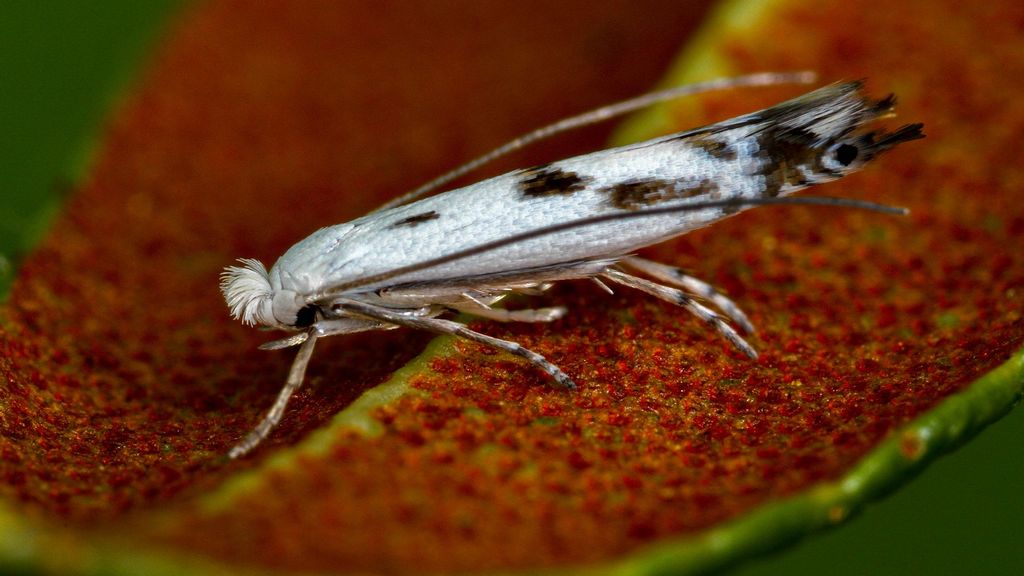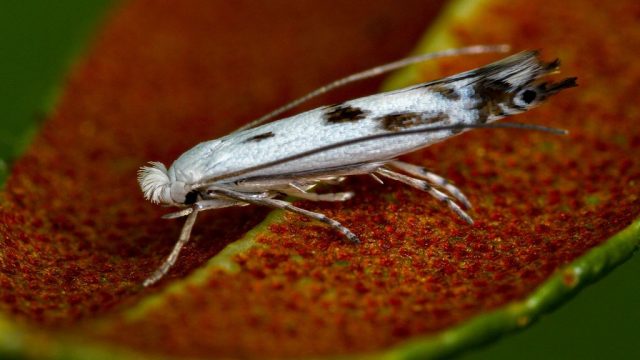
Researchers in Switzerland have discovered that a beautiful speckled white moth species survived being hundreds of miles from any similar moths since the last ice age, 12,000 years ago, by eating a plant too toxic for anything else to consume.
The moth eats the Alpine rose, from which it derives its name and whose toxicity drives other animals away.
The rare discovery was made by Peter Huemer, a butterfly researcher who has confirmed that the moths are of a previously unknown population.
The plants that the moth species once lived on died out in the area during the last ice age, and, instead, the new population appears to have learned to feed on the Alpine rose.

The caterpillars of the Alpine rose leaf-miner moth live by feeding on the leaves of the plant, which they burrow inside, according to a study published in the journal Alpine Entomology.
Huemer, who heads the Natural Sciences Department of the Tyrolean State Museum, said the discovery came about by chance. It was wellknown that the Alpine rose (Rhododendron ferrugineum) was toxic to animals and humans, and, therefore, it was never properly studied or even looked at by butterfly and moth researchers. The plant contains the moderately toxic substances arbutin, arecoline and rhodoxanthin.
While doing a survey of moths and butterflies in the village of Ardez, Switzerland, on July 29, Huemer made a brief stop and was amazed to find a caterpillar feasting inside one of the leaves of an Alpine rose. The fact that a moth population has developed to feed on it is all the more surprising given the harsh conditions more than 5,900 feet above sea level in the Swiss Alps, which are often covered in snow.
“The purely accidental sighting of the first caterpillar in an Alpine rose leaf was an absolute adrenaline rush, it was immediately clear that this must be an extraordinary species,” Huemer said in a statement issued by Tyrolean State Museum.

Following the discovery, Huemer and Swiss butterfly expert Juerg Schmid spent two weeks focusing on the region’s Alpine rose bushes and discovered what they described as a stable population of the moths that had completely escaped identification and classification.
Caterpillars and pupae were sought for documentation purposes in several excursions between the end of July and mid-August.
The moth lays an egg that, when it hatches, produces a larva that drills through the upper leaf skin into the leaf interior, which it then proceeds to eat. Because it lives inside the leaf, it escapes the harsh Alpine weather and predators and creates a tunnel in the thicker-than-average leaf, where it also leaves its feces.

The moths the researchers found belong to a species widespread in Northern Europe, northern Asia and North America, known as the swamp porst leaf-miner moth (Lyonetia ledi).
The wild rosemary leaf-miner moth lives in Northern Europe exclusively on wild rosemary (Rhododendron tomentosum) and bog-myrtle (a flowering plant in the family Myricaceae). However, these two typical shrubs of bogs are missing in the Alps.
That said, wild rosemary and the Alpine rose shared the Swiss habitat in earlier cold phases in the past in the high Alps.
It is, therefore, speculated that after the last glacial period and the melting of the glaciers, a transition of the caterpillar from wild rosemary to the Alpine rose as a source of food took place at the Swiss site.
The separation of the areas of both plants, caused in subsequent heat phases, inevitably led to the separation of the moths.
Edited by Richard Pretorius and Kristen Butler
The post That Moth Be A Record: Moth Species Survived 12,000 Years On Remote Mountain Peak appeared first on Zenger News.




